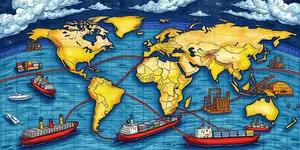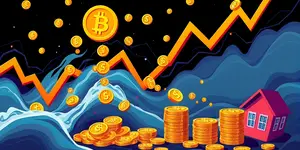
In the first half of 2025, exchange-traded funds (ETFs) have drawn unprecedented levels of investor capital worldwide. Driven by expectations of market resilience and opportunities for diversification, global ETF flows offer a compelling narrative of how investors navigate volatility. As record-breaking net inflows have reshaped portfolios, both retail and institutional participants are discovering new strategies to capitalize on momentum and secure long-term growth.
The US ETF industry has led this remarkable charge, registering over record-breaking net inflows in 2025. From January through April, investors poured $360.89 billion into US-listed ETFs, surpassing previous benchmarks and marking the 36th consecutive month of net inflows. Assets under management in US ETFs now approach $10.46 trillion, narrowly trailing the January peak of $10.73 trillion.
Europe is also experiencing a surge, with Europe-domiciled funds attracting $141.2 billion year-to-date, compared to $93.8 billion at the same point last year. Core equity ETFs account for $113.2 billion, while fixed-income products captured $26.4 billion, reflecting a balanced appetite for growth and stability.
Meanwhile, India’s domestic equity ETFs saw a phenomenal 500% month-over-month increase in March 2025. Net inflows jumped from ₹1,943.8 crore in February to ₹11,808.08 crore, underscoring the shift by retail investors toward liquid, low-cost passive instruments amid global uncertainties.
Several intertwined factors have fueled the inflows, from market optimism despite geopolitical risks to the growing sophistication of ETF product design. Investors now view ETFs not only as passive vehicles but also as tactical tools to express convictions on interest rates, commodities, and emerging sectors.
The ascent of digital asset funds has added another dimension to this narrative. Bitcoin ETFs drew $2.7 billion in a single week of June, nearly matching half of last year’s full H1 inflows. This reflects a broader willingness to embrace alternative asset classes alongside traditional holdings, as investors seek higher returns in a low-yield environment.
In the United States, the top 20 ETFs garnered $75.73 billion in April alone, with the Vanguard S&P 500 ETF (VOO) absorbing $20.88 billion. On June 19, the iShares Core S&P 500 ETF (IVV) saw a single-day inflow of $4.7 billion, lifting its assets under management beyond $575 billion even as major indices dipped.
Europe’s inflows have been led by large-cap equity trackers and resilient bond ETFs. With core equity funds capturing the lion’s share, investors are rotating into defensive and yield-focused positions as monetary policy remains in flux.
India’s retail base is embracing ETFs for the first time. Low entry costs and seamless online platforms have accelerated adoption, with investors increasingly favoring broad-market exposure over thematic mutual funds. This trend underscores a maturing domestic ecosystem that aligns with global shifts toward passive investing.
As ETF flows reshape portfolios, individual investors can harness these trends through clear, actionable approaches:
Risk management remains paramount. Setting stop-loss levels and adhering to predetermined rebalancing schedules can prevent emotional decision-making during turbulent markets. Additionally, investors should review expense ratios and tracking errors to ensure efficient implementation of their strategies.
With geopolitical tensions and policy uncertainties persisting, ETFs are poised to maintain their appeal. Ongoing innovations—such as environmental, social, and governance (ESG) ETFs and thematic baskets focusing on artificial intelligence, clean energy, and healthcare—will expand investor choice.
Active ETF launches continue to outpace retirements, indicating strong product-level demand. Bond and multi-asset offerings will likely see further adoption as yield hunters seek stability amid potential rate hikes. Meanwhile, digital asset products may redefine modern portfolios if regulatory clarity and institutional support strengthen.
Ultimately, the ETF market’s record-breaking inflows signal more than just capital shifts; they represent a broader evolution in how individuals and institutions pursue growth, manage risk, and embrace innovation. By understanding these dynamics and implementing disciplined strategies, investors can position themselves to thrive in an era defined by rapidly changing market environments and boundless opportunity.
References













